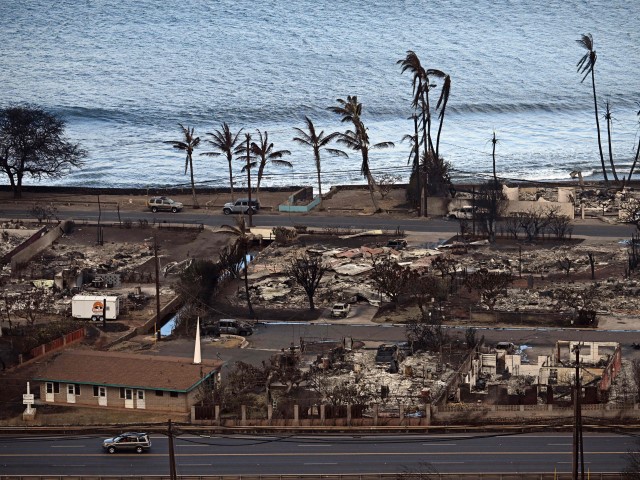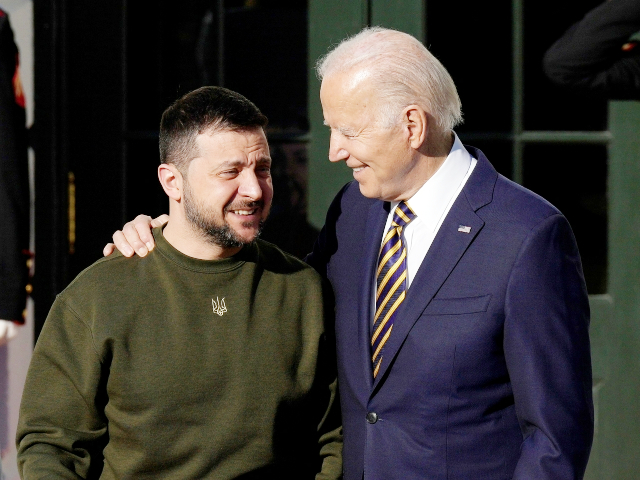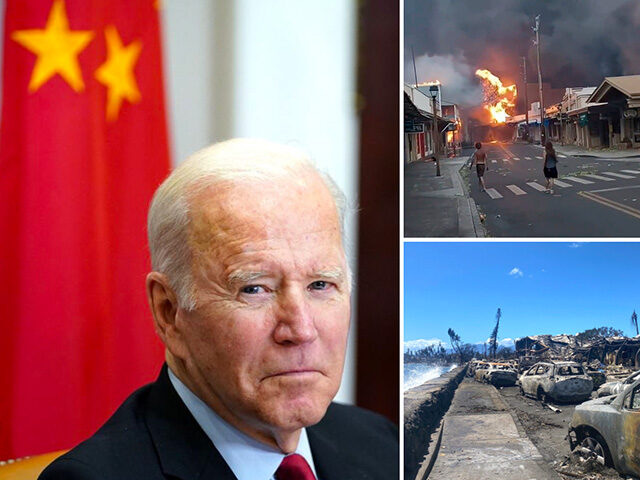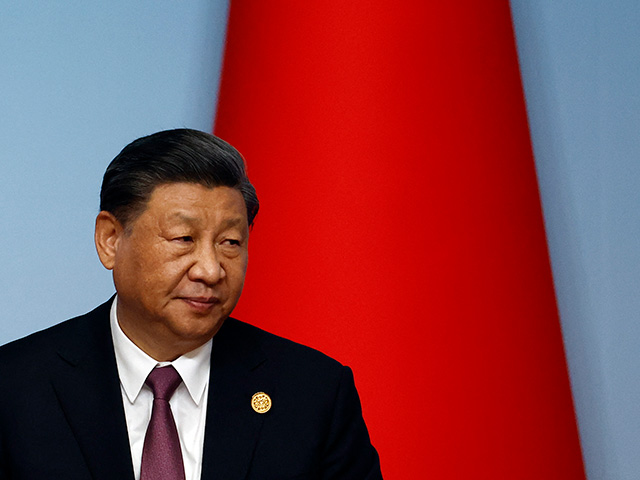Chinese state media this week gleefully mocked President Joe Biden for bungling the response to Hawaii’s wildfires.
Editorials pushed the Communist Party narrative that only authoritarian governments can handle disasters of such magnitude, and taunted the U.S. for prioritizing military spending over disaster response.
On Tuesday, the state-run Global Times taunted that Hawaii’s travails made the U.S. look “unlike a developed country,” as the fires exposed incompetence at every level:
Deadly wildfires in Hawaii, which caused the biggest death toll in more than a century in the US and forced thousands to evacuate from their homes, expose the incompetence of the US government, said analysts, with many local residents who survived the disaster posting videos on social media criticizing the problematic response of local authorities and poor early warning system. Residents also criticized US mainstream media reports, saying this was not just a natural disaster, but also a man-made calamity.
Chinese analysts and web users are paying attention to the horrible tragedy that Americans have suffered, as the hashtags on Sina Weibo about “Hawaii wildfires” have received more than 71.52 million views on Tuesday. Experts said the response of the US government made the US look “unlike a developed country.”
The Global Times ran through stories about fire warnings not sounding, Hawaiians left to fend for themselves without warning or evacuation assistance, and the looting of disaster relief supplies to conclude that state and federal government failed at every turn.

An aerial image taken on August 10, 2023, shows destroyed homes and buildings burned to the ground in Lahaina in the aftermath of wildfires in western Maui, Hawaii. (PATRICK T. FALLON/AFP via Getty Images)
The article made room to needle Biden for his now-infamous “no comment” remark when asked about the Hawaii fires while he was incongruously vacationing on a Delaware beach and marveled that U.S. media outlets protected Biden from the political fallout by obsessively covering the indictments of former President Donald Trump instead.
"Any comment on the rising death toll in Maui?"
BIDEN: "No. No comment." pic.twitter.com/oORpRuLUpz
— RNC Research (@RNCResearch) August 14, 2023
“When I open the websites or apps of US mainstream media like The New York Times and CNN, the headline story today is about Donald Trump’s legal issues, and other prominent news stories are about Ukraine, but the reports about the most deadly wildfire in more than a century in the US, while the death toll is keep [sic] updating, can only be found at the bottom,” grumbled Chinese Academy of Social Sciences research fellow Lu Xiang.
The Global Times was especially fascinated that the U.S. military was not called in to assist Hawaiians, even though “the Pacific Fleet is right there in Hawaii.”
“In China, the military, police and other professional rescue forces will respond immediately to rescue people every time when disasters occur in any location in China,” the Chinese editors wrote smugly.
![TOPSHOT - Burned cars, destroyed buildings and homes are pictured in the aftermath of a wildfire in Lahaina, western Maui, Hawaii on August 11, 2023. A wildfire that left Lahaina in charred ruins has killed at least 55 people, authorities said on August 10, making it one of the deadliest disasters in the US state's history. Brushfires on Maui, fueled by high winds from Hurricane Dora passing to the south of Hawaii, broke out August 8 and rapidly engulfed Lahaina. (Photo by Paula RAMON / AFP) / "The erroneous mention[s] appearing in the metadata of this photo by Paula RAMON has been modified in AFP systems in the following manner: [August 11] instead of [Auguat 10]. Please immediately remove the erroneous mention[s] from all your online services and delete it (them) from your servers. If you have been authorized by AFP to distribute it (them) to third parties, please ensure that the same actions are carried out by them. Failure to promptly comply with these instructions will entail liability on your part for any continued or post notification usage. Therefore we thank you very much for all your attention and prompt action. We are sorry for the inconvenience this notification may cause and remain at your disposal for any further information you may require." (Photo by PAULA RAMON/AFP via Getty Images)](https://media.breitbart.com/media/2023/08/GettyImages-1592921596-1.jpg)
Burned cars, destroyed buildings and homes are pictured in the aftermath of a wildfire in Lahaina, western Maui, Hawaii on August 11, 2023. (PAULA RAMON/AFP via Getty Images)
Such a large number of casualties would be a major disaster in any country, and it is even more shocking when it occurs in the world’s most developed country. The US is prone to natural disasters such as wildfires and hurricanes. However, the country’s patchy response when dealing with these disasters is perplexing. The US has always proclaimed itself as a “world leader” and claims to be capable of responding rapidly to security threats around the globe. It possesses over 800 military bases overseas and projects its military power with aircraft carriers worldwide. But when it comes to domestic disasters or public safety incidents within the US, its response is slow and its ability to cope seems inadequate.
Although Hawaii is not located on the continental US, it remains one of the most critical military bases for the country. Hawaii serves as the headquarters of the US Indo-Pacific Command. The Indo-Pacific Command claims to “govern” over 50 percent of the world’s surface area, but ironically remains indifferent to the disasters that occur in its own location. What has fueled anger among the local community is the fact that the initial relief work was largely organized by residents themselves, with little presence from the National Guard, Federal Emergency Management Agency (FEMA), state government, or local authorities. An American internet user sarcastically remarked, “Our warships can provoke China in the South China Sea, they can shadow China in Alaska, but they can’t come to Hawaii to help Americans.” This aptly illustrates the hierarchy of decision-making in the US.
US sluggish and indifferent response to its domestic catastrophic incidents sharply contrasts with its fervent resource mobilization in “competition” with other nations. Leaving a deep impression on us, there was the Hurricane “Katrina” in 2005 that resulted in the loss of 1,836 lives, and the train derailment in East Palestine earlier this year carrying hazardous chemicals. There was also the Florida building collapse in 2021 that claimed 98 lives, and the slow rescue efforts during that time were referred to as “archaeological-style rescue.” A foreign netizen said, “The ‘American-style rescue’ in Hollywood movies is nowhere to be seen, with no American rescue heroes or high-tech equipment.” This observation seems to be perfectly fitting for every disaster in America, including the current Hawaii wildfires.
WATCH — CNN’s Weir: “We Haven’t Seen” Promised Relief Efforts in Hawaii, “We’ve Got Guys Putting out Fires with Bottled Water”:
The editors heckled the U.S. for spending its military budget on confrontations with poor, innocent, peace-loving China — and its misunderstood friends in Russia, who somehow found themselves on the wrong side of the Ukrainian border last year — instead of beefing up disaster relief.
Picking up on a widespread complaint in American social media, the Global Times asked how the Biden administration could announce another $200 million in military aid for Ukraine while offering only $700 apiece for Hawaiians devastated by the wildfires.
“The US government prefers to hype harmless balloon accidents as major security threats, but remains ‘calm’ about the tragic disasters causing significant casualties right in front of it. When the next disaster strikes, the performance of the US government is unlikely to be any better,” the editorial concluded.

U.S. President Joe Biden (R) welcomes President of Ukraine Volodymyr Zelensky to the White House on December 21, 2022, in Washington, DC. (Drew Angerer/Getty)
The U.S. Defense Department did mobilize military assets to assist with wildfire response, and a joint task force remains active in Maui County. The Army and Navy have contributed equipment and personnel to the rescue effort, including Seahawk, Blackhawk, and Chinook helicopters. The U.S. Marine Corps is meanwhile busy with disaster relief in Papua New Guinea, which suffered volcanic eruptions over the past five weeks.
The Pentagon said on Monday that active duty military forces have not been deployed into the area because “rushing in resources too quickly could create additional logistics problems for rescue operations on the ground.”
“Everyone fully understands the pain that people are experiencing right now. We want to do everything we can help. But we also don’t want to contribute to the problem by sending unnecessary capabilities that then will hinder any type of emergency response,” said Pentagon spokesman Brig. Gen. Pat Ryder.
Unmentioned in either article is that China just deliberately ruined the lives of countless innocent civilians by dumping flood water into their villages to protect Beijing and a vanity construction project ordered by dictator Xi Jinping. If Chinese “netizens” are forgetting their outrage over the floods to follow Hawaii’s wildfires, then the Global Times and other state media outlets have accomplished their primary mission.


COMMENTS
Please let us know if you're having issues with commenting.